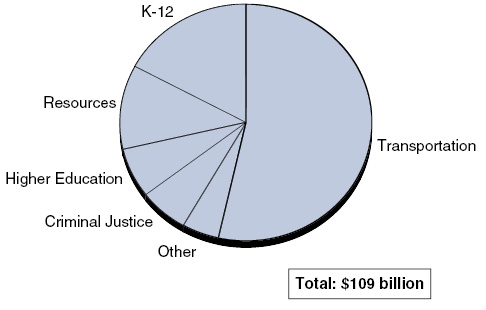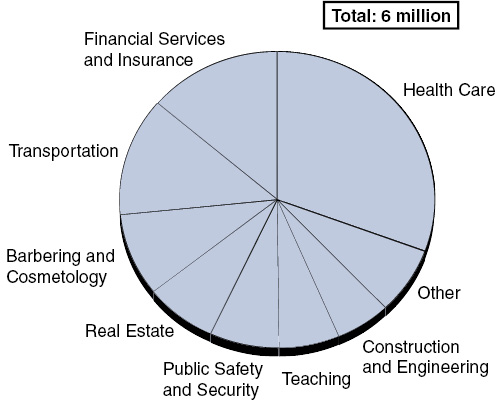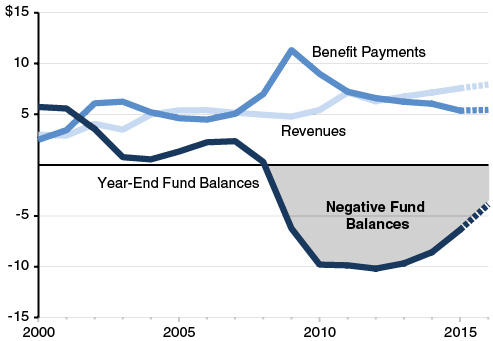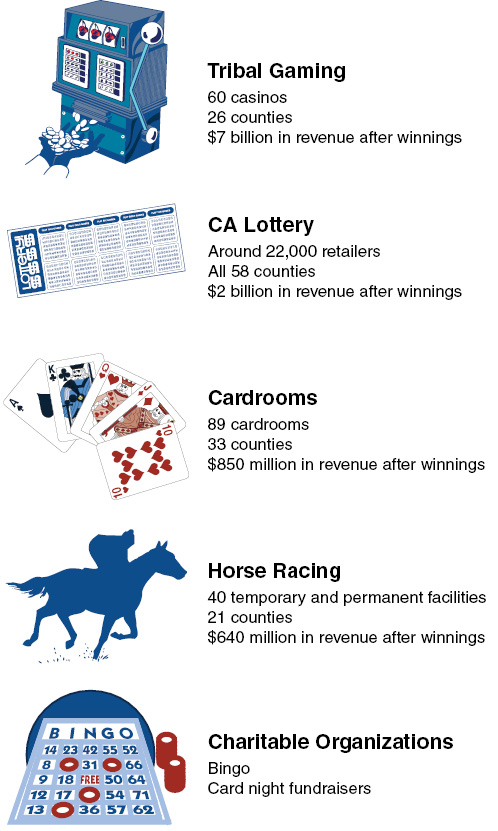With a state as big, as populous, and as complex as California, it would be impossible to quickly summarize how its economy or state budget works. The purpose of Cal Facts is more modest. By providing various "snapshot" pieces of information, we hope to provide the reader with a broad overview of public finance and program trends in the state.
Cal Facts consists of a series of charts and tables which address questions frequently asked of our office. We hope the reader will find it to be a handy and helpful document.
—Mac Taylor, Legislative Analyst
December 5, 2016
Most State Infrastructure Spending Is for Transportation and Education
Infrastructure Spending, 2005-06 to 2014-15

- Over the past ten years, we estimate the state spent over $100 billion on infrastructure. More than 75 percent of this spending was for transportation projects and educational facilities (K-12 and higher education).
- More than half of state infrastructure spending was for local infrastructure projects (such as local schools and roads) versus state projects (such as prisons and highways).
- About 60 percent of the state’s infrastructure spending was financed using bonds. The remaining 40 percent was paid up front, almost all from special fund revenues, such as taxes on gas.
California Licenses Professionals In a Wide Variety of Fields
Total Number of Licenses

- We estimate that Californians hold about 6 million state licenses or similar certifications to perform their jobs. About 19 million Californians are in the workforce.
- Nearly a third of the state’s occupational licensees are in the health care field, such as for nurses, physical therapists, and dental hygienists. Other professionals licensed by the state include commercial drivers, insurance agents, cosmetologists, teachers, and security guards.
- Nationally, the percent of the workforce licensed by state and local governments is estimated to have increased from less than 5 percent in the early 1950s to 25 percent in 2008.
The Unemployment Insurance (UI) Trust Fund Insolvency Continues
(In Billions)

- The UI Trust Fund exhausted its reserves in 2009, requiring the state to take on federal loans to continue benefit payments. The balance of the fund's federal loans, shown as negative fund balances above, is estimated to be roughly $4 billion at the end of 2016.
- The state makes annual interest payments while a loan balance remains. In 2016, the state paid $111 million in interest costs from the General Fund.
- The federal loans are estimated to be repaid in 2018, in part due to temporarily increased revenues from federal UI taxes paid by employers. However, absent an ongoing increase in revenues and/or reduction in benefits, the trust fund risks returning to insolvency in a future economic downturn.
Major State Information Technology (IT) Projects Under Developmenta
(In Millions)
|
Project Description |
Estimated |
Estimated |
|
Integrated statewide financial information system (“FI$Cal”) |
July 2019 |
$910.0 |
|
Statewide case management system for child welfare services |
May 2020 |
420.8 |
|
Electronic health record system for corrections system |
January 2020 |
386.5 |
|
Integrated revenue information system for Board of Equalization |
November 2020 |
343.4 |
|
Management information system for food assistance program serving women, infants, and children |
March 2021 |
90.3 |
|
Total |
$2,151.0 |
|
|
aThe IT project to process payments for Medi-Cal fee-for-service providers is being revised following the termination of the vendor contract and is not reflected in this table. Prior to the contract termination, the project was estimated to cost several hundreds of millions of dollars. It is unknown what the cost will ultimately be or when the project will be completed. |
||
- Currently, there are 29 state IT projects approved by and under the oversight of the Department of Technology in various phases of development. The total cost, should the state complete all IT projects as currently envisioned, is estimated to be about $2.5 billion.
Gambling in California


